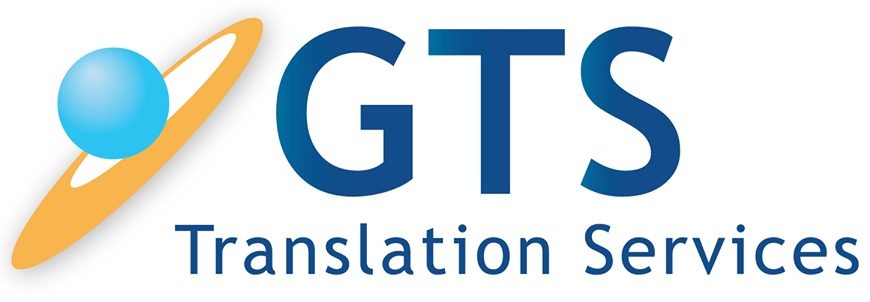by David Grunwald
There is a significant demand for translation of handwritten texts, and at GTS Translation Services, we frequently receive requests for this service. Manual digitization of handwritten texts can be slow and tedious, especially if the text is difficult to decipher. Furthermore, translators are reluctant to accept this kind of work and if they do, charge a hefty price for the service. So how do you overcome these challenges? This post provides valuable insights into understanding the problem and finding the right tools to get the job done.
Common Types of Handwritten Documents that Require Translation
Handwritten documents come in many forms, depending on the industry and purpose. Some of the most common types include:
- Legal Documents: Birth, marriage, and death certificates; wills and testaments; contracts and court records.
- Medical Records: Doctor’s notes, prescriptions, and patient files.
- Financial Papers: Invoices, receipts, and ledgers.
- Personal Writings: Family letters, diaries, and love notes.
- Historical Texts: Church records, military service files, and unpublished manuscripts.
Each of these document types poses unique challenges in deciphering and translating due to handwriting variability and legibility issues.
The Challenges in Deciphering Handwritten Texts
Handwriting variability presents a significant challenge in deciphering handwritten texts. Different writing styles, such as cursive, print, mixed styles, or shorthand, can be difficult to standardize. Individual handwriting differences add another layer of complexity, as no two people write exactly alike, and even a single person’s handwriting may vary within a document. Additionally, some writers do not clearly separate words or letters, making recognition even more difficult.
Poor legibility is another major obstacle. Messy or rushed handwriting with inconsistent strokes can severely reduce readability. Ink that has faded over time due to age, environmental factors, or poor storage can also make text difficult to interpret. In some cases, words and letters may be written too closely together, leading to overlapping or crowded text, which makes segmentation and recognition a challenge.
Language and script complexity further complicate the process. Documents written in non-Latin scripts, such as Arabic and Chinese, introduce additional challenges for recognition. Historical documents may contain outdated characters or spelling conventions that are no longer in use, making interpretation difficult. Moreover, older manuscripts and legal texts often include handwritten abbreviations and symbols that require specialized knowledge to understand.
The quality of the document itself also plays a critical role in deciphering handwritten texts. Low-resolution scans and blurred or smudged writing caused by ink smears, erasures, or overwriting can make the job very difficult. Additionally, physical damage to documents, such as folded or torn pages, can result in missing sections of text, creating gaps in understanding.
Can AI Help?
Google Cloud Vision OCR
Google has a good product for digitizing handwritten texts. The catch here is that the product is not free and is only available through the API. Which means that if you are not comfortable with writing code, you won’t be able to access it. They do have an interactive demo where you can upload images to see how the OCR feature detects and extracts text. We tested the software on some pretty challenging handwritten pages and did a good job. However, the demo does not allow upload of PDF files and does not provide file download. So the usefulness of the demo is very limited.
Amazon Textract
This product is also not free and is only available through the API. Furthermore, you will need an AWS account to access the free online demo. We tested the software on some pretty challenging handwritten pages and did a good job. Furthermore, it supports PDF files and provides file download. The demo is limited to 10 pages. So you can use the demo on short files but if you need production-level use, you will need to write an application that uses the API.

Pen to PRINT
This online tool works well but the free demo is extremely limited. You can try it on handwritten pages but it won’t let you download anything without buying some credits first. And the lower entry-level is $47.99 which may make this a bit expensive for some users. Pen to Print is also available as a mobile application on both iOS and Android devices, allowing users to capture and digitize handwritten notes directly from their smartphones or tablets.
The Likely Technology Behind These Tools
It’s likely that tools like HandwritingOCR.com and Pen to Print rely on AI platforms such as Google Cloud Vision OCR or Amazon Textract, given their high accuracy and multilingual support. Both platforms also offer APIs, but if you’re comfortable with programming, going directly to the source (Google or Amazon) might save costs in the long run.
Conclusion
Interview with the CEO of Handwriting OCR
As part of the testing we did for this post, I purchased the pay-as-you-go plan from Handwriting OCR. Soon hereafter, an email was reviewed from Matt, the CEO of Handwriting OCR.
I’m Matt, the founder of Handwriting OCR, and I’m writing to ask for your feedback to understand how we can improve.
Could you take a moment to share your thoughts on:
– Where did you hear about us?
– What’s the main thing you needed our service for?
– How well did the OCR accuracy work for your documents?
– What would make it more useful for your workflow?A quick reply to this email would really help guide our development priorities and make a better service for people like you in the future.
Matt
Founder, Handwriting OCR
To understand the technology behind this company, I sent Matt a series of questions to gain insights into the unique features, use cases, and future developments of the platform.
Before we get into it, I find it important to stress that there is something fishy about this interview and the company. Matt refused to reveal his last name or share a social media page on LinkedIn or similar. Even after I pressed him on this issue, he would not reveal his real name. That leads me to believe with near certainty that Handwriting OCR is using one of the APIs I mentioned previously and wrote a backend website for monetization purposes. Not that there is anything wrong with it, quite the contrary. Making this technology available and at an affordable entry level deserves kudos.
But the lack of transparency is an asterisk on this company which should be considered if someone or a company is hoping to make a major purchase of this service. It seems inconceivable that a one-man operation which remains clouded in secrecy would have the resources to develop technology which competes with Amazon and Google. I would, therefore, also take this interview with a grain of salt.
Q: What makes Handwriting OCR unique compared to other OCR tools?
A: Handwriting OCR is unique because of our singular focus on handwritten text. This is the most difficult challenge in OCR, and, until now, there have been no truly accurate solutions for transcribing handwriting to text. While Google, Microsoft, and Amazon offer outstanding OCR solutions for general (printed) documents, they often fail to deliver true accuracy when faced with handwritten text.
Q: What technology powers Handwriting OCR’s impressive accuracy?
A: We have trained a proprietary model using millions of open-source handwritten texts that’s designed specifically for handwritten OCR. This tailored approach ensures that our model handles handwriting far better than general-purpose OCR tools.
Q: How does Handwriting OCR perform with challenging or degraded handwriting?
A: Handwriting OCR handles challenging handwriting surprisingly well! Not all texts are in pristine condition, and users often share documents that are faded, damaged by age, or written in a particularly illegible hand. Yet, we manage to transcribe these texts with an accuracy that many users find pleasantly surprising.
Q: Who are the typical users of Handwriting OCR?
A: There is a huge range of use cases. We see users from the world of education—both teachers and students. Many users come from historical research backgrounds, such as historians, archivists, or amateur genealogists researching their family history. We also have many business users who need to process paper-based forms with handwritten text.
Q: What has been the most surprising use case for Handwriting OCR?
A: Perhaps the most surprising was a project to transcribe some very old Indian religious texts. I was pleased to learn that we did a good job of transcribing them! More gratifying are the emails we get from users who have used Handwriting OCR to transcribe family letters. We can do in a few minutes what would previously have taken weeks or months of manual work.
Q: Does Handwriting OCR support multiple languages?
A: Yes, we support all major languages and many more besides. While we most frequently see the major European languages like English, French, German, and Spanish, our users come from all over the world. This means we have also helped with many lesser-known languages.
Q: What kind of feedback do you receive from your users?
A: The overwhelming feedback from users is extremely positive. We have also put effort into making the website highly usable and intuitive, so users often comment that the process is very easy, which adds to their satisfaction.
Q: What types of projects do your customers typically bring to Handwriting OCR?
A: Generally, users come to us with very large archives of handwritten documents. We are able to digitize these archives quickly, accurately, and at a low cost, which is something they greatly appreciate.
Q: What’s next for Handwriting OCR?
A: The major focus is on continuing improvement of our core handwriting OCR model. We are constantly improving the accuracy and incorporating user feedback to deliver a better experience. Some users have asked for automatic translation into their target language, and this is one feature on our roadmap that could be a useful first step for professional translators.
Q: Do you foresee users relying entirely on automated OCR without human review?
A: Our service is fully automated—we do not review any user documents. As the accuracy of our OCR continues to improve, users may become comfortable with skipping their human review altogether, though this will depend on the use case and their specific requirements.
Q: What advice would you give to organizations looking to digitize large volumes of handwritten text?
A: Get in touch! We’re experienced in working with very large archives and can customize the results to suit an organization’s needs. Our universal advice is that the quality of the source document is key—ensure your documents are scanned in focus and oriented correctly for the best results.
Q: What should users consider when choosing an OCR tool for handwritten texts?
A: First and foremost, the accuracy of the OCR is critical. The difference between OCR like ours, which can deliver near-perfect transcriptions of handwritten text, and a standard OCR model like Google’s can be hours of manual post-processing and editing. Every document is different, so users should take advantage of any free trials, like ours, to test a sample of their documents and judge the results.





